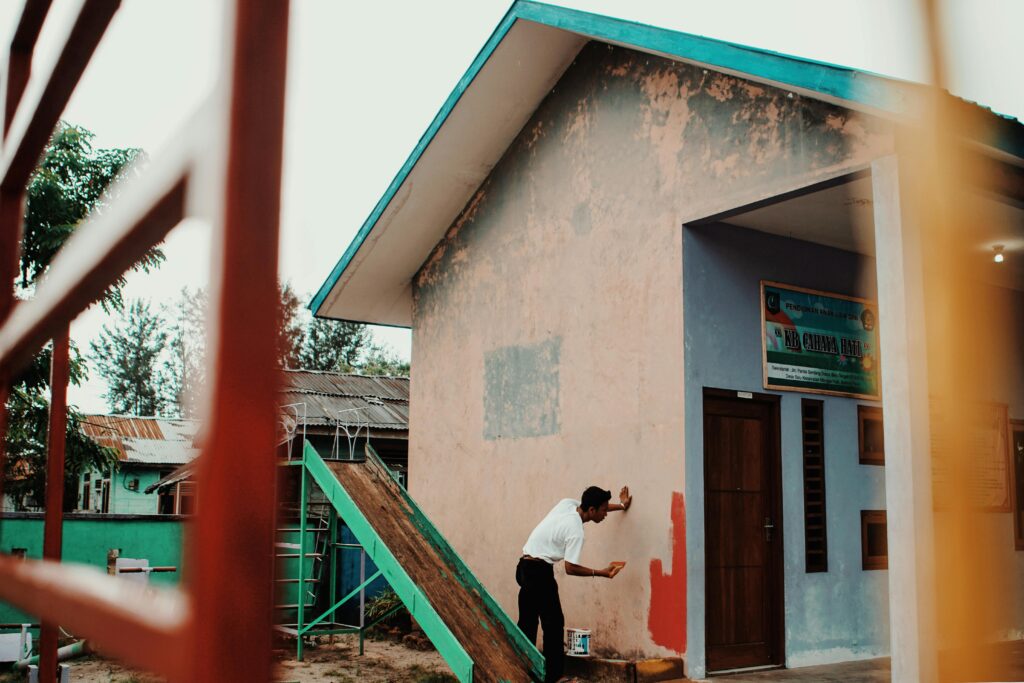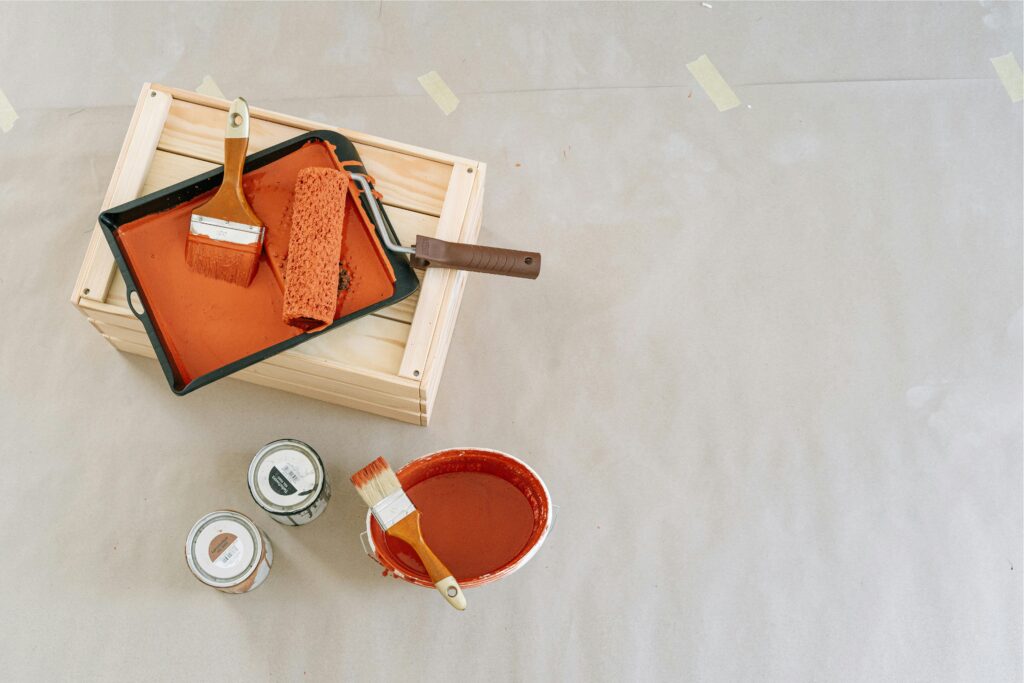In this article, you will discover not only the best times of the year to paint your home’s exterior but also proven techniques to ensure your paint job lasts through every season. From the chilly breezes of fall to the sweltering heat of summer, we’ll cover how weather conditions affect paint adhesion, drying times, and overall durability. You’ll learn insider secrets that professional painters rely on to pick the ideal day and follow preparation steps tailored for each season. Whether you’re painting a wooden porch in spring or refreshing stucco before winter, these seasonal exterior painting tips when and how to paint outdoors will arm you with the knowledge to make smart choices.
By the end of this guide, you’ll feel confident not only about picking the right moment to start but also how to adapt your painting technique to seasonal challenges. No more frustration with bubbling paint or fading colors , just a beautiful, long-lasting finish every time you tackle your outdoor painting projects. Let’s dive in and transform your home’s exterior with precision timing and expert care!
Table of Contents
ToggleKey Takeaways
- Optimal Weather Window: Aim to paint outdoors when temperatures are between 50°F and 85°F, humidity is below 70%, and there’s no rain in the forecast for at least 24–48 hours.
- Seasonal Timing Matters:
- Spring: Moderate temps—watch for sudden rain.
- Summer: Avoid peak heat; paint in cooler morning or late-afternoon hours.
- Fall: Ideal season—stable, mild conditions; finish before first frost.
- Winter: Generally avoid unless using cold-weather formulations on warm, dry days.
- Thorough Surface Prep: Regardless of season, always clean, scrape, sand, and repair the exterior so the new paint adheres properly and lasts longer.
- Right Product Selection: Use high-quality, exterior-grade acrylic latex paints and primers formulated for your climate and season to resist mildew, UV damage, and temperature swings.
- Proper Application Techniques: Apply thin, even coats; follow manufacturer’s drying-time guidelines; start mid-morning and finish well before evening dew or rising humidity.
- Post-Paint Maintenance: Inspect and touch up annually, clean gently, and monitor for peeling or cracks to extend the life of your exterior finish
Why Seasonal Exterior Painting Tips When and How to Paint Outdoors Are Essential for Lasting Results
Painting the exterior of your home may seem like a straightforward task, but understanding seasonal exterior painting tips when and how to paint outdoors can make all the difference between a beautiful, durable finish and a paint job that peels or fades prematurely. Exterior painting is more than just picking a trendy color; it involves knowing the right timing and techniques tailored to your local climate and house conditions. This knowledge is crucial because weather significantly impacts how paint adheres, dries, and lasts.
To paint outdoors successfully, it’s essential to grasp the importance of seasonality in painting projects. Factors such as temperature, humidity, and precipitation directly influence drying times and paint adhesion. According to the Painting and Decorating Contractors of America (PDCA), ideal exterior painting conditions are temperatures between 50 and 85 degrees Fahrenheit, with low humidity and no rain forecasted for at least 24 hours. Painting under less than optimal conditions can lead to unsatisfactory results, including bubbling, cracking, or peeling paint.
For example, consider the story of the Martinez family from Seattle, who learned the importance of seasonal painting the hard way. They painted their home’s exterior in late fall without checking the weather forecast. Within weeks, their fresh paint started to blister due to the damp conditions typical of the Pacific Northwest’s rainy season. After a costly repainting project that followed the PDCA’s seasonal painting guidelines , waiting for a dry spell in early summer , the Martinez family now enjoys a vibrant and enduring exterior finish.
This story illustrates why seasonal exterior painting tips when and how to paint outdoors are not just suggestions but essential steps in protecting your home investment and achieving lasting beauty. In this blog, we dive deep into understanding the best times to paint outside, how environmental conditions affect your project, and practical tips that can transform your painting efforts into stunning, long-lasting results.
How to Apply Seasonal Exterior Painting Tips Step by Step
Painting the exterior of your home can be a rewarding project that boosts curb appeal and protects your property from the elements. However, timing and technique are crucial, especially when working outdoors amid changing seasons. In this section, we’ll walk through a detailed, step-by-step guide on applying seasonal exterior painting tips to ensure your paint job lasts and looks fantastic no matter the time of year.
1. Assess the Weather Conditions
The first and most important step in any exterior painting project is to evaluate the weather. The ideal conditions for outdoor painting are:
– Temperatures between 50°F and 85°F (10°C to 29°C).
– Low humidity (below 70% is best).
– No rain forecast for at least 24 to 48 hours after painting.
– Calm winds to prevent dust and debris from sticking to the wet paint.
For example, if you decide to paint in the fall, aim for days with mild temperature shifts and avoid painting during the rainy season or when frost is expected.
2. Choose the Right Season to Paint
Different seasons have their advantages and challenges when it comes to exterior painting:
– Spring: Colors typically dry well because of moderate temperatures but watch for sudden showers.
– Summer: Warm and dry, but avoid painting during the hottest part of the day to prevent blistering or uneven drying.
– Fall: Often considered the best season due to stable temperatures and lower humidity.
– Winter: Generally not recommended for exterior painting unless you live in a mild climate; cold can interfere with paint adhesion and drying.
Knowing when to paint based on your local climate directly influences the longevity of your work.
3. Prepare the Surface Thoroughly
Preparation is key for any painting job, especially outdoors where dirt, mildew, and peeling paint can cause problems later.
– Clean surfaces with a pressure washer or scrub brush to remove dirt and debris.
– Scrape off all loose or peeling paint.
– Sand the surface to smooth rough edges.
– Repair cracks or holes with an appropriate filler.
– Allow surfaces to dry completely before starting, ideally for 24–48 hours depending on humidity.
Proper surface prep ensures the new paint adheres correctly and withstands seasonal weather changes.
4. Select the Right Paint and Primer for Your Season
Using paints formulated for exterior use and suited for your climate can make a big difference.
– Opt for high-quality acrylic latex paints, which handle temperature fluctuations well.
– Choose primers that fill imperfections and provide a stable base.
– For humid seasons, consider paints with mildew-resistant properties.
– In colder months, use paints designed to cure effectively at lower temperatures.
Your choice will help the paint remain vibrant and protective across seasons.
5. Time Your Painting Around Daily Weather Patterns
Even within the right season, timing matters.
– Start early in the day after any morning dew has evaporated.
– Avoid painting late in the day when humidity tends to rise.
– Schedule the painting so it finishes at least two hours before sunset to allow proper drying.
Timing paint application according to daily weather cycles can prevent common issues like poor drying and uneven finish.
6. Apply Paint Using Proper Techniques
How you paint can be just as vital as when you paint.
– Use brushes for corners and edges; rollers for open flat areas.
– Apply paint in thin, even coats rather than thick layers.
– Follow the grain of the surface for better adhesion.
– If a second coat is needed, wait for the first coat to dry completely (usually 4-6 hours).
– Always keep leftover primer and paint sealed tightly to avoid contamination.
Following best painting practices helps your exterior look professional and protects it from seasonal wear and tear.
7. Monitor and Maintain After Painting
Once your project is complete, ongoing care will extend the life of your paint.
– Check your exterior seasonally for peeling or cracks.
– Clean painted surfaces gently using mild detergents.
– Touch up any damaged areas before they worsen.
Regular maintenance protects your investment and keeps your home looking great year-round.
Example: Painting a Home Exterior in Fall – A Quick Overview
To illustrate, let’s say you’re planning to paint your home exterior this fall. Here’s a quick checklist applying the seasonal painting tips:
– Check the 10-day weather forecast for dry, mild temperatures.
– Clean and prep your siding, removing any loose paint and debris.
– Use a mildew-resistant primer and high-quality acrylic paint.
– Start painting mid-morning when the temperature is steady.
– Apply two thin coats, allowing drying time between each.
– Finish painting before sunset to avoid dew and humidity.
By following these steps, you use the season’s natural advantages to get a flawless finish that lasts.
By mastering these step-by-step seasonal exterior painting tips, you’ll set yourself up for success regardless of when you tackle your outdoor painting project. Remember, attention to weather, preparation, paint selection, and proper technique are the pillars of a durable and beautiful finish.

Seasonal Exterior Painting Tips When and How to Paint Outdoors
Painting your home’s exterior can dramatically boost curb appeal and protect your property from the elements. Knowing when and how to paint outdoors is crucial to achieve a flawless finish. Here are some Seasonal Exterior Painting Tips When and How to Paint Outdoors to help you get the best results all year round.
Tips for Seasonal Exterior Painting – When and How to Paint Outdoors:
🌤️ Choose the Right Weather Days:
✅ The best days for exterior painting are dry, mild, and overcast. Temperatures between 50°F and 85°F avoid blistering or peeling. Avoid painting in direct sunlight or when rain is expected within 24 hours for optimal adherence.
🍂 Timing in Fall:
✅ Fall is ideal because humidity drops, and temperatures are moderate. Start early in the season to allow drying time. Avoid painting on frosty mornings or when temperatures dip below 50°F.
🌞 Spring and Summer Painting Tips:
✅ Early spring mornings and late afternoons in summer provide cooler temperatures and less direct sunlight. Hot weather can cause the paint to dry too fast, creating uneven texture. Ensure surface moisture from spring rains has fully evaporated.
❄️ Avoid Winter Painting:
❌ Painting during winter is generally discouraged since freezing temperatures prevent proper paint curing. If winter painting is necessary, use specially formulated paints for cold weather and choose warmer, sunny afternoons.
🛠️ Surface Preparation Is Key Year-Round:
✅ Clean, scrape off old paint, and sand surfaces regardless of the season. Remove molds, mildew, and dirt. Moisture trapped beneath paint during any season leads to peeling and blistering.
💧 Mind Humidity Levels:
💡 High humidity slows drying time and affects paint adhesion. Aim to paint when humidity levels are below 70%. Use a moisture meter if possible to check surface dryness before painting outdoors.
🕐 Plan for Adequate Drying Time:
✅ Different paints and weather conditions affect drying. Latex paints typically dry faster in warm temps but can take up to 24 hours to fully cure. Oil-based paints may take longer, especially in cooler seasons.
🌿 Protect Surroundings During Painting:
💡 Use drop cloths and painter’s tape. Outdoor painting often involves dealing with wind, falling leaves, or dust. Keeping your work area clean helps maintain a professional finish.
By following these Seasonal Exterior Painting Tips When and How to Paint Outdoors, you’ll enhance the longevity and look of your exterior paint job no matter the season. Remember, the secret is in timing, weather awareness, and thorough preparation!
Key Concepts
Understanding the essence of seasonal exterior painting requires delving into the interplay between nature, time, and the art of preservation. Painting the outside of a house is far more than a mere aesthetic upgrade; it functions as a protective shield against the unrelenting forces of weather, light, and moisture. Approaching it seasonally means recognizing that each period of the year brings its unique challenges and opportunities, making timing and technique crucial.
The Rhythm of Nature and Paint
Imagine paint as a living skin for your home, sensitive to the pulse of its environment. Just as human skin responds differently to sun, cold, or humidity, paint reacts distinctively depending on temperature, daylight hours, and atmospheric moisture. Seasonal painting is about synchronizing with these natural rhythms rather than battling against them.
In the warmth of late spring and early summer, paint thrives. The sun provides the perfect temperature range, not too hot to cause rapid drying that leads to cracking, and not too cold to inhibit proper curing. This season acts like a gentle tutor, guiding the paint to settle and bond perfectly with the surface.
Conversely, autumn’s cool, crisp air offers a slower drying environment. While this can deepen the durability and richness of the paint, it requires patience and a keen sense of timing to avoid early frosts that might freeze the paint mid-cure. Winter and high humidity months, on the other hand, pose challenges akin to trying to write with a nib in freezing rain: the work becomes cumbersome, and the results unpredictable.
The Science Behind Surface Preparation
Before paint touches the exterior walls, it embarks on a journey concerning surface readiness. This concept is much like preparing a canvas before painting a masterpiece, the texture, cleanliness, and dryness of the surface dictate the longevity and finish of the paint job.
Moisture levels fluctuate seasonally in outdoor wood, masonry, or metal surfaces. Painting over dampness is akin to sealing a secret in a leaking envelope; the message fades and peels away quickly. Therefore, understanding the moisture content in relation to the season builds the foundation for a successful exterior painting project.
The Chemistry of Paint Curing
Paint drying is more than letting water evaporate, it’s a chemical transformation. This process, known as curing, involves polymers linking tightly as solvents exit the paint film, securing color and protection.
Seasonal temperature and humidity dramatically influence curing times. For instance, in hot, dry conditions, paint may dry superficially, forming a brittle crust while inner layers remain uncured, risking premature failure. In contrast, cold or moist climates slow down the polymerization, leaving paint vulnerable to dirt and debris.
This delicate balance mirrors the careful tempo of a symphony, each environmental factor is like an instrument that must be in harmony for a flawless performance.
The Role of Seasonal Weather Patterns
Weather patterns act as the unseen director in the drama of exterior painting. The steady rhythm of sunlight, the unpredictable cadence of rain, or excursions of frost all dictate the optimal windows for painting outdoors.
For example, spring rains cleanse surfaces, but they can also delay painting by saturating materials. Summer heat may accelerate drying but also bring the threat of sun scorch during application. Autumn’s predictable chill offers a serene staging ground for complex paint layers, while winter’s frosty breath often suspends painting plans altogether.
Embracing these patterns is like a sailor mastering the wind and tides, success comes from respect, not resistance.
The Psychological Connection to Seasonal Aesthetics
Beyond the technical, seasonal exterior painting weaves into the emotional narrative of a home’s identity. Just as nature changes its cloak with the seasons, painting can refresh or redefine a house’s character in harmony with its surroundings.
Imagine a cottage in fall, clad in warm, earthy hues that echo fallen leaves and cozy fires, or a bright, fresh spring palette that invites renewal and light. This interplay between color and season shapes not only the home’s protection but also its expression, deeply humanizing what is otherwise a functional task.
Merely understanding when and how to paint outdoors through the lens of seasons unveils a complex yet fascinating landscape where art, science, and nature converge. It transforms exterior painting from a routine chore into an orchestrated dialogue with the environment, one that requires patience, knowledge, and a reverence for the subtle dance of the elements.
Frequently Asked Questions about Seasonal Exterior Painting Tips: When and How to Paint Outdoors
❓ When is the best season to paint the exterior of a house?
The ideal season for exterior painting is typically late spring through early fall. Temperatures should be between 50°F and 85°F (10°C to 29°C) with low humidity to ensure proper paint drying and adhesion.
❓ Can I paint outdoors during the winter months?
Painting outdoors in winter is generally not recommended because cold temperatures can cause paint to dry improperly, leading to cracking and peeling. However, some specialized paints are designed for lower temperatures if urgent painting is needed.
❓ How should I prepare the exterior surface before painting?
Surface preparation is crucial; clean the walls thoroughly to remove dirt and mildew, scrape off peeling paint, sand rough areas, and fill any cracks. Proper preparation ensures the paint adheres well and lasts longer.
❓ Is humidity a concern when painting outside?
Yes, high humidity can prolong drying time and may affect the paint’s finish. It’s best to paint on days with moderate humidity levels, ideally below 70%, and avoid painting if rain is forecast within 24 hours.
❓ What types of paints work best for different seasons?
Acrylic latex paints are versatile and great for most seasons due to their durability and quick drying properties. In cooler weather, low-temperature or all-weather paints are recommended to ensure proper curing.
By following these seasonal exterior painting tips, you can maximize your painting project’s success and enjoy a beautiful, long-lasting finish.



2 Responses